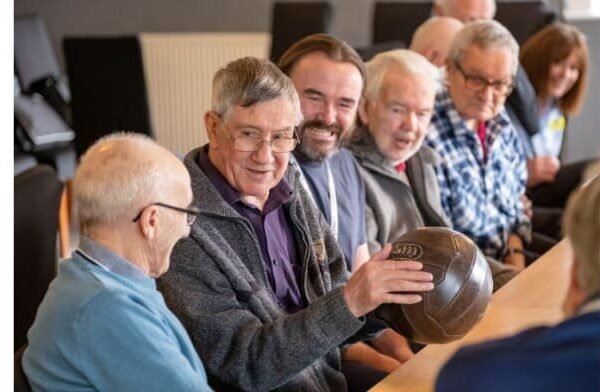A future of opportunity for Scotland
By CHARLIE RAEBURN
Sport increasingly does not stand alone. There are many new providers, from the commercial world to social enterprises. Standards, values and costs can vary considerably. To help everyone there is a serious need for local community planning and regeneration to ensure participation for all members of a society and community.
It is highly unlikely that Local Authority and Leisure Trusts, which are universally reporting serious financial challenges, can sustain the current sports delivery and facilitation models. Indeed, at the first OSS National Sport Summit in November, Glasgow Life’s Director of Sport and Events told the 260 delegates: “The current model is broken and unsustainable.”
He is looking at a future with less public funding – having witnessed a trend over two decades of reducing funding in sport, leisure and recreation – and is already working on new partnerships with NHS, health and social care partnerships, enterprise and the third sector. Others are more optimistic and believe that the Scottish Government will increase its funding to local government, and that local authorities may change focus and start to invest in sport, leisure and recreation to levels not seen since the 1990s. This is despite economists warning of an even longer period of austerity as a result of COVID-19 than we experienced post-2008.
The last 10 years and the current COVID-related crisis have created necessity and opportunity. Scotland’s health profile is under serious question. The Christie Commission Report (2011) stated, among its key recommendations (necessity), an absolute requirement that there should be political recognition for civic society and a wellbeing agenda. The “four pillars of the report” were:
- Reforms must aim to empower individuals and communities receiving public services by involving them in design and delivery of the services they use;
- Public service providers must be required to work much more closely in partnership, to integrate service provision and thus improve the outcomes they achieve;
- We must prioritise expenditure on public services, which prevent negative outcomes from arising;
- Our system of public services – public, third and private sectors – must become more efficient by reducing duplication and sharing services wherever possible.
How do we take this forward? I would suggest this has to come through more commitment and resources for Local Health and Care Partnerships, which include all providers, and effort to improve communication and relationships between volunteers, commercial providers and social enterprises. At the same time we need to find ways to more effectively optimise the use of all assets and facilities, and take advantage of the fast developing IT innovations.
Over recent years the Netherlands have seen a shift from a ‘welfare state’ to a ‘participation society’. The dominant goal of this participation society is to get citizens more involved in their neighbourhood or municipality. This means that citizens are asked to take on more activities to increase the ‘liveability’ of their neighbourhood or to assist the municipality in making important decisions. By considering the development of inclusive locality planning for civic society (wellbeing) activities – perhaps Scotland could follow this lead?
At a micro level there is the example of Birmingham’s Active Wellbeing Society:
Our vision is for a society where people have the autonomy, capacity, resources and skills to become the architects of their own destiny; where our individual wellbeing is recognised as being bound up in our collective responsibility to and dependency on each other; and where all of us feel empowered as agents of social change to make a difference – whether at an individual level or more widely.
By working collaboratively with communities we aim to bring about sustainable change on an social, environmental and economic level; to do the social knitting required to create stronger and more resilient communities and to support communities to identify, mitigate and remove the barriers that prevent them from living active and connected lives.
Where are we in the civic society debate in Scotland? Hannah Ormiston, Policy and Development Officer, Carnegie UK Trust, reports that “Scotland was the first of the three devolved legislatures to place wellbeing at the heart of their approach to governance and the ‘National Performance Framework’ has increasingly been linked to policy-making for inclusive growth”.
Sounds promising. Yet, from experience, Scotland still does not compare favourably in practice with our northern European neighbours who have built in and supported civic society for generations.
At a UK level, inspired by the Wellbeing of Future Generations Act (Wales) 2015 – and the lessons learned since its enactment – the ‘Future Generations Bill’ is seen as an opportunity to embed long-termism, prevention and the interests of future generations at the heart of UK policy-making, aiming to tackle the climate crisis, poverty and health inequalities, head on. Can we harness that same opportunity north of the border? Again, this will need all kinds of enterprises coming together, and a commitment to empower and enable local communities on a continuing basis. Do we have that cohesion of purpose and vision across Scotland? In terms of the community sport and recreation that enhances our quality of life, it is difficult to see.
Looking at sport and physical activity in relationship to mental health, Sport England said recently:
- We believe the impact sport and physical activity can have on mental wellbeing is every bit as important as the physical benefits;
- Physical activity can contribute to enjoyment and happiness, and more broadly to life satisfaction through increased social interaction;
- Volunteers and sports fans also have an increased sense of purpose and pride, while self-esteem and confidence are known to increase through participation or volunteering;
- Sport and physical activity also have the potential to reduce anxiety and depression symptoms.
So, there would appear to be little doubt that sport and recreation is a valuable asset and needs to be nurtured for the sake of our long-term health and wellbeing. There is evidence of significant transition that has been occurring in the Netherlands, from a ‘welfare state’ to a ‘participation society’, and promising indications that this can be developed at a micro level in the UK, in Birmingham’s ‘Active Wellbeing Society’.
There is evidence too in Scotland of the importance of wellbeing with The ‘National Performance Framework’, put into law in 2015 and revamped in 2018. And upcoming, there will be opportunities with the ‘Future Generations Bill’, now in its Second Reading in the House of Commons.
It is good to reflect again on the view of Andy Haldane (current Chief Economist at the Bank of England) from the COVID-19 crisis, on what needs to be done now. He told the Financial Times (April 2020):
“The need to change how societies and companies keep the score, to better recognise all the capital, and all the paid and unpaid contributions citizens make, is surely a lasting lesson from this crisis.”
There would appear to be much singing from the same hymn-sheet across the globe so one feels that now is the time for Scotland to turn talk of putting health and wellbeing at the heart of our society into the kind of action that can help our recovery from Covid-19 and lead to a sustainable, healthier future for this and future generations.
Read the other parts to this series below, and let me know what you think and join the discussion with your comments at the bottom of this page.






Thought Piece from Charlie Raeburn for Reform Scotland